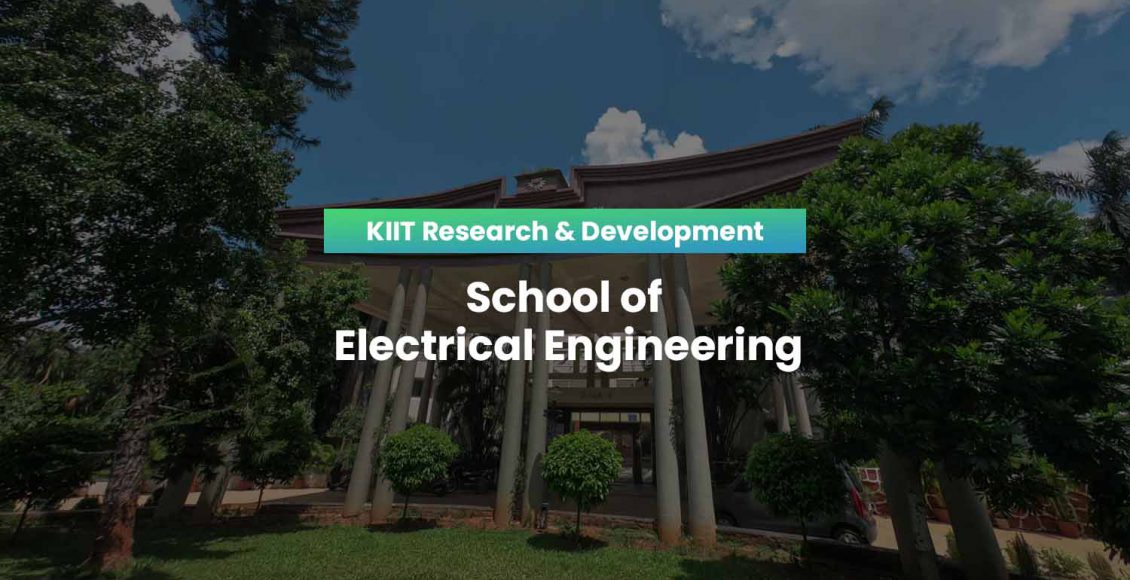School of Electrical Engineering (March 2022)
Journal Papers
1. Mishra, S., Swain, S. C., and Dash, R. (2022) Switching Transient Analysis for Low Voltage Distribution Cable, Open Engineering, Vol. 12, No. 1, pp. 29–37. https://doi.org/10.1515/eng-2022-0004.
Abstract
Low voltage cable is primarily connected from the transmission system to several household applications. It is quite common that switching transient in the power system during the energization of the high voltage and low voltage cables have a very crippling effect on the cable as well as the power system components. Hence, an experiment has been performed in the laboratory with a low voltage cable-connected motor system. The experimental results have been validated in the simulation platform, and they are capable of predicting the transient behavior during power cable energization. The effect of transients on power cables during the energization of devices has been investigated in this study in the form of voltage, current, and frequency. Discrete wavelet transform is implemented for the decomposition of the transient current. The generated approximation signal is used to quantify the severity during switching transient condition.
2. Nanda, L., Jena, C., Pradhan, A., and Panda, B. (2022) A Proposed Asymmetrical Configuration of Cascaded Multilevel Inverter Topology for High Level Generation, International Journal of Power Electronics and Drive Systems, Vol.13, No.1, pp. 289–297, http://doi.org/10.11591/ijpeds.v13.i1.pp%25p.
Abstract
Multilevel inverters enjoy good demand in high-power applications. They work in the medium voltage range. In short time intervals, a small number of switches will operate in such converters, resulting in low switching loss. This paper represents overall total harmonic distortion for different levels and different carrier frequencies. The paper estimates the inverter efficiency from switching loss and the conduction loss of the inverters. Phase displacement pulse width modulation method is proposed to generate pulses. The proposed topology is presented by demonstrating its practical implementation with two DC sources. All the simulations have been carried out using MATLAB/Simulink platform to validate the hardware results.
3. Panigrahy, D. and Samal, P. (2021) Modified Lightning Search Algorithm for Optimization. Engineering Applications of Artificial Intelligence, Vol. 105, 104419, DOI: 10.1016/j.engappai.2021.104419(IF: 6.212).
Abstract
This manuscript proposes a new metaheuristic optimization algorithm for solving the problems related to constraint optimization. The proposed methodology is compared with seven other well-known algorithms, namely, the lightning search algorithm, differential evolution algorithm,cuckoo search algorithm, particle swarm optimization algorithm, seagull optimization algorithm, chimp optimization algorithm, and mayfly algorithm, by computing mean, standard deviation, best and worst values for 60 benchmark functions. The proposed methodology is also validated by implementing it in seven real-time constraint optimization problems. The results show a better performance of the proposed optimization algorithm compared to the other algorithms.
Conference Papers
1. Laxmi, R.,Sahu, P. K., Jena, S.,Achrya, A. K.,Padhy,S.and Roy, S. (2021),Design and Control of Single-Phase Solar PV Inverter with MPPT Algorithm, 2nd IEEE International Conference on Applied Electromagnetics, Signal Processing & Communication (AESPC),AESPC-2021, 26–28, November,pp. 1–5, doi: 10.1109/AESPC52704.2021.9708483.
Abstract
In this paper, a high-performance, duel-stage and low-cost solar powered solar PV inverter is proposed for the stand-alone operation. First, the dc-dc boost converter is designed based on the step-up voltage ratio as demanded by the inverter. The maximum power from the PV system can be extracted by using a commonly used P & O maximum power point tracking algorithm. The output dc power produced by the dc-dc converter is supplied to a single-phase, full-bridge dc-ac converter (inverter). A dual-loop control scheme is used to enhance the power quality of the inverter. The outer voltage loop is used to maintain a constant load voltage at any load conditions, whereas the inner current loop is used to enhance the transient response against the sudden load fluctuation conditions. Both loops comprise the conventional PI controller. The steady-state response in terms of low THD and dynamic response in terms settling time aremeasured to evaluate the efficacy of the proposed dual-loop control structure. Finally, the proposed controller is imposed to a 2 KVA, 110 V (rms), 50 Hz dual-stage solar inverter. The simulation results ensure the tremendous MPPT performance of efficiency 99.17 % whereas low THD of less than 3 % appeared across the PV inverter output voltage.
2. Sharma, P., Senapati, R., andSwetapadma, A., (2021),Review of Blockchain-Based Energy Trading Models,International Conference in Advances in Power, Signal, and Information Technology (APSIT), Bhubaneswar, India, pp. 1–5.https://doi.org/10.1109/APSIT52773.2021.9641217.
Abstract
Renewable energies (REs) are trending as the technology to improve its efficacy moving at a fast pace. REs have been utilized in many domestic and industrial premises as a surplus energy. Trading of this surplus energy within a local market scenario can help in meeting the demand requirements and can outlook a new scope of energy trading. This requires high security and transparency among the stakeholders. Among various technologies, blockchain can be proved as a promising platform for a secure and transparent transaction. This paper comprises an extensive review of different blockchain based energy trading model and discusses various research scopes for mitigating of certain issues with ongoing research models to gain higher efficiency.
3. Mishra, S., Nayak, B. K., and Fernandes, B. G. (2021), Ferrite PM-Assisted Synchronous Reluctance Motor for EV Application,IEEE 18th India Council International Conference (INDICON),pp. 1–6, doi: 10.1109/INDICON52576.2021.9691573.
Abstract
Permanent Magnet Assisted Synchronous Reluctance Motor (PMASynRM) research has gained a lot of traction in recent years. In this paper, a Ferrite PMASynRM is proposed for electric four wheeler applications. The design specifications are given. The proposed design has been compared with the Freedom Car 2020 specifications using finite element analysis. The operation of the proposed model is studied over the rated power envelope and core loss is calculated. Demagnetization of the ferrite magnets is studied at the peak torque condition. It is verified that the use of odd number of slots per pole pair in the stator leads to a decrease in torque ripple.


